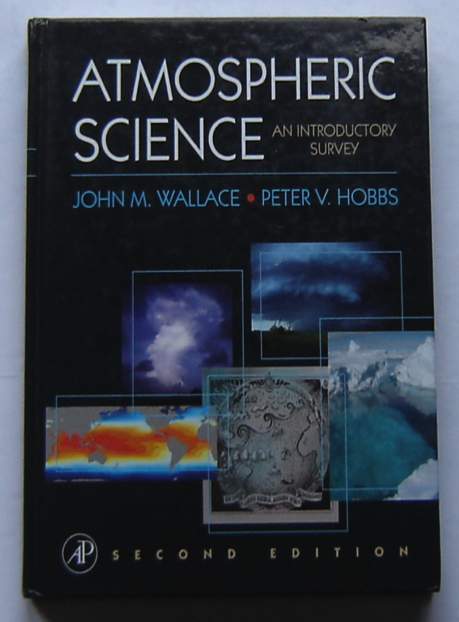Fundamentals of Atmospheric Science EAS 0309/B3090 & EES 79903
*City College Course Website
(designed and administered by James Booth)*
Text Book: Wallace and Hobbs
(2nd Edition) 
Instructor: Professor James Booth
Contact Information: jbooth AT ccny.cuny.edu
Meeting time: Mon/Wed
2:00-3:15pm
Classroom: Marshak Science Building Room 044 (in the basement)
Course summary: A rigorous
introduction to the thermodynamics and dynamics of the atmosphere.
For more details, including grading rupric, see the syllabus.
List of files/handouts
SYLLABUS (with details on class location and course
grading rupric)
Graduate Students Additional Instructions
COURSE DATES
WEB LINKS TO STUDENT RESOURCES AT CCNY
CCNY Academic Calendar, Science Advising, The Career & Professional Development Institute, Student Counseling Center
CLASS LOG
After each class, this website is where I will list what we covered.
This is also where I will post homeworks and other documents.
General Summary of what we will cover in the book
Book-related Slides for Lecture 1
Class #2, Wednesday Sept. 4
Topics covered: Book keeping (how I grade), Big Picture discussion of atmospheric science, Thermodynamics (pressure from Chapter 1 and Ideal Gas Law from Chapter 3)
Class #3, Thursday Sept. 5
Topics Covered: Ideal Gas Law (3.1 in book); Virtual Temperature (3.1.1); Hydrostatic Balance (3.2)
Suggestion: read through Exercises 1.1, 1.2 and 2.2 in the book.
Homework #1: Due Weds. Sep 11 at start of class.
Print of this pdf and write on it!!! Homework Assignment #1 (pdf)
Class #4, Monday Sept. 9
Topics Covered: Homemade Barometer;
Geopotential (3.2.1), The hypsometric Equation (Section 3.2.2), Atmospheric thickness (3.2.3)
Class #5, Wednesday Sept. 11
The first law of thermodynamics. (3.3.)
Specific Heats of Dry Air at Constant Volume and at Constant Pressure (3.3.2)
Dry static energy (Equatin 3.51) {but skip Enthalpy}
Adiabatic Processes (3.4)
The dry adiabatic lapse rate (3.4.2)
Also, I provided a list of all diabatic processes in the atmosphere
They are:
radiative heating/cooling (think wave energy)
sensible heating/cooling (think conduction)
latent heating (think phase changes of water)
Class #6, Monday Sept. 16
Discussion of R_d, c_v,c_p :: The dry air gas constant and specific heats (i.e., heat capacities).
We reviewed adiabatic processes and the dry adiabatic lapse rate.
Class #7, Wednesday Sept. 18
Exam #1
Class #8, Monday Sept. 23
Exam #1 was returned to the students and discussed. UG class avg: 84%
Graduate class average: 88%.
Then we turned our attention to: potential temperature! Section 3.4.3
Class #9, Wednesday, Sept. 25
Static Stability (3.6) and Water Vapor (3.5)
The following worksheet is optional. Select problems have answers given at the end.
Worksheet for Week 6 (pdf)
Class #10, Wednesday, Oct. 2
We again covered, Static Stability (3.6) and Water Vapor (3.5).
This was intentional. These topics are critical.
We also dsicussed weather using forecast data: https://weather.cod.edu/forecast/
and climate data analysis:
https://climatereanalyzer.org
Class #11, Monday, Oct. 7
Moist Static Energy, Saturated Ascent, and the cloud-in-a-bottle example
========= Homework #2, Due Oct 16 ==========
Homework 2 (pdf)
===========================================
Class #12, Wednesday, Oct. 16
Stability and moist saturated ascent.
Clausius-Clapeyron Empirical Equation:
esat = 6.11 exp[(17.67*T)/(T+243.5)]
esat: hPa, T: celsius.
Class #13, Monday, Oct. 21
Review of Homework #2, Review for the exam.
Non-zero variables that are conserved in adiabatic ascent:
theta, theta-E, Dry Static Energy, Moist Static Energy, specific humidity, mixing ratio
========= Study Question Examples for Quizzam 2 ==========
Sample Questions for Exam 2 (pdf)
==============================
REMINDER: Quiz #2 in on Wednesday, Oct 23.
Class #14, Wednesday, Oct. 23
Exam #2 and hurricanes as Carnot Heat Engines
Class #15, Monday, Oct. 28
Handed back Exam #2, class average: 82%
Atmospheric Chemistry Lecture
Note that we are only covering a small part of Chapter 5.
The exact readings are on the first page of these lecture notes.
Slides for atmospheric chemistry (pdf)
Class #16, Wednesday, Oct. 30
Chapter 6, cloud microphysics. Slides for today and next monday (pdf)
Class #17, Monday, Nov. 4
New slides for monday, and weds. (pdf)
Class #18, Wednesday, Nov. 6
New slides Weds. (pdf)
Class #19, Monday, Nov. 11
Analysis of global cloud climatologies using MODIS data (pptx)
Note that convection and entrainment are tightly linked.
Strong entrainment of low RH air will weaken the convection.
Class #20, Wednesday, Nov. 13
Atmospheric Dynamics (Chapter 7).
Note that the Lagrangian and Eulerian derivatives are introduced in Chapter 1.
Class #21, Monday, Nov. 18
Take home exame, due at start of class (pdf)
Must be turned in at the start of class. No late files allowed.
Class #22, Wednesday, Nov. 20
Class notes (pdf)
The notes include details on which sections to read in Chapter 7.
Class #23, Monday, Nov. 25
More atmospheric dynamics. Know how to take calculate the cross product and the curl
Class #24, Wedneday, Nov. 25
Individual discussions.
Class #25, Monday, Dec. 2
Chalk board: Thermal Wind Balance.
Then we started Chapter 8: Weather phenomena
See the weather forecasting links in the following document
Class notes (pdf)
============ HOMEWORK #3, DUE MONDAY DEC 9 ======================
Homework #3 (pdf)
====================================
Class #26, Wednesday, Dec. 4
Chapter 8: Weather phenomena.
Sections to read in Chapter 8:
8.1.1 and 8.1.2 -ignoring parts about vorticity
Extratropical Cyclones
============ HOMEWORK #4, DUE WEDNESDAY DEC 11 ======================
Homework #4 (pdf)
====================================
Class #27, Monday, Dec. 9
Chapter 8: Weather phenomena.
Tropical Cyclones, Deep Convection, and Extratropical Cyclones
Class notes (pdf)
Class #28, Wednesday, Dec. 11
Chapter 8: Weather phenomena.
Lecture on Extratropical Cyclones (pdf)
END OF WEBPAGE.